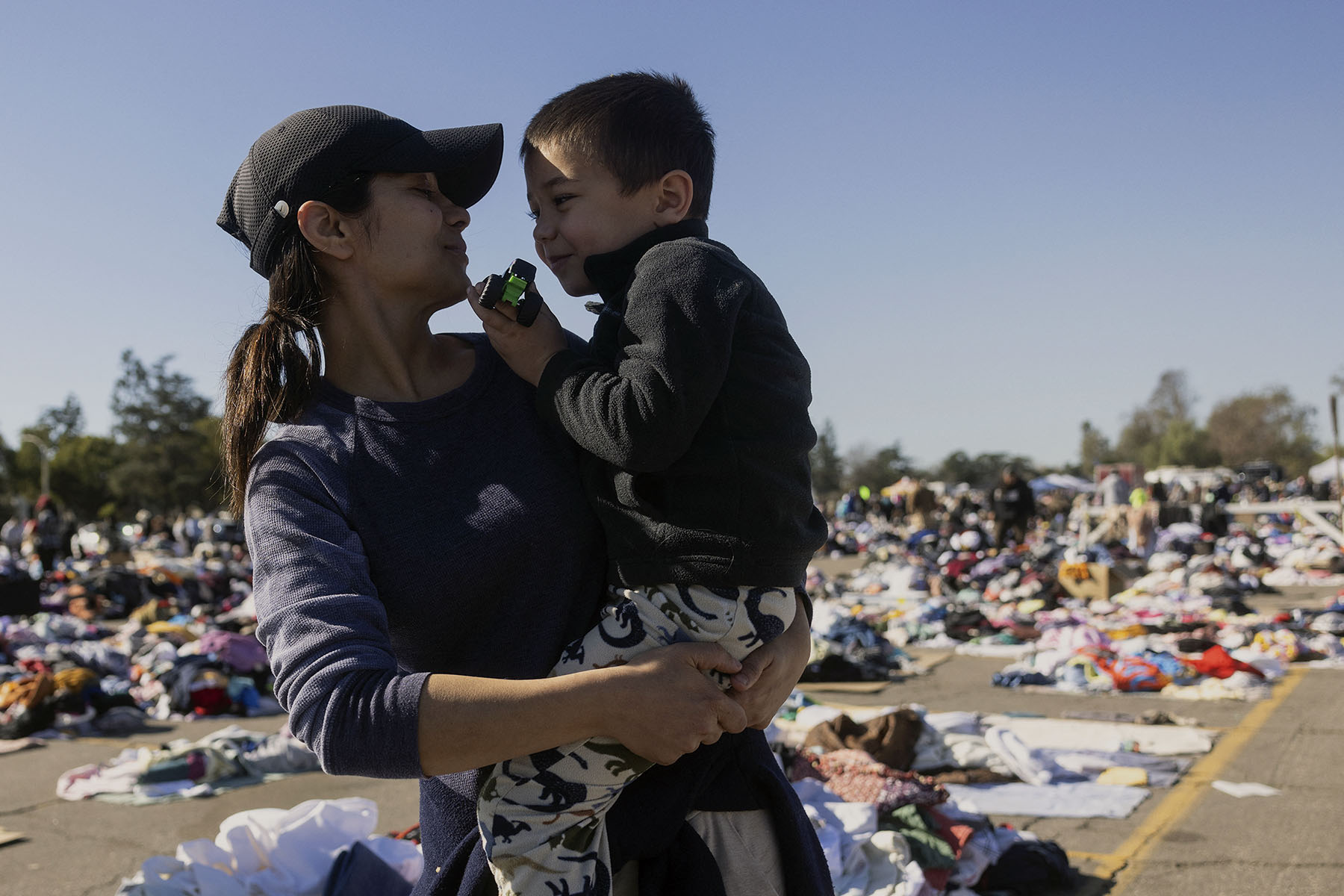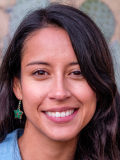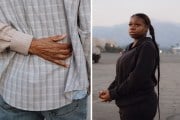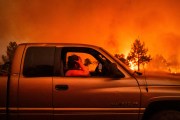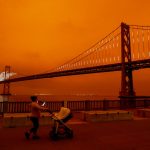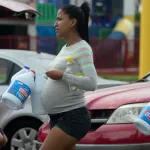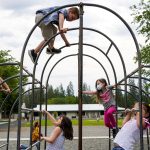When Erin Williams Tyler and her son evacuated their home in Altadena, California, they only had about 30 minutes to grab what they could before driving away. Tyler focused on gathering pictures while her son, who is 10, grabbed a collection of his shoes. Everything else was burned in the Eaton Fire that destroyed their home as well as large swaths of their historically Black community.
After they evacuated to her uncle’s house in a different part of the city, Tyler’s son went through a phase of wanting to be hyper-informed, obsessively tracking fire updates on social media and looking up information. But Tyler could tell it was adding to his anxiety about the situation, so they started limiting his time on the internet and restricting him to websites that showed where the fires were burning without overloading him with information. She wonders how the loss of their home will impact his mental health in the long term.
“I do worry about how the destabilization is going to affect him,” they said. “We do plan to rebuild, but it is a big trauma to lose everything that you have at 10 years old.”
She’s tried to help take his mind off the disaster, with toys and workbooks while he’s out of school, which was also damaged by the fire. But he’s not just processing his own loss, it’s also that of his friends and classmates.
In the week since the fire, they were sent a picture of their now destroyed house.
“He knows it is gone,” she said. “I think now he’s just in the process of figuring out what life is going to be now.”
-
More from California:
-
More from California: ‘I just really want my home back’
Tyler is one of many mothers across the Los Angeles area who are trying to figure out how to move on after the disaster while also taking care of their children’s mental and physical health.
Children are particularly susceptible to issues with their mental health after a disaster, because they understand less about what is happening than adults and depend on others to take care of them. A recent review of the research found that they can experience post-traumatic stress disorder, depression and anxiety for years after living in an area that had a wildfire. According to one study that surveyed over 3,000 students affected by a 2016 wildfire in Canada, children who had directly seen the fire or lost their homes exhibited significantly higher levels of PTSD and other mental health issues than those who didn’t.
Children can also exhibit other signs of stress like the inability to sleep through the night, something that Betsy Cardenas, a mom who lives around 12 miles from the Eaton Fire, said she’s noticed in her 11-year-old son. While they weren’t directly affected, they were on a constant state of alert as fires around them continued to grow at alarming rates.
“I started seeing sleep disruptions, like waking up in the middle of the night, the night the fire started,” she said. “He heard us talking about it and he wanted to sleep in our bed.” He was scared, and frankly, so was she.
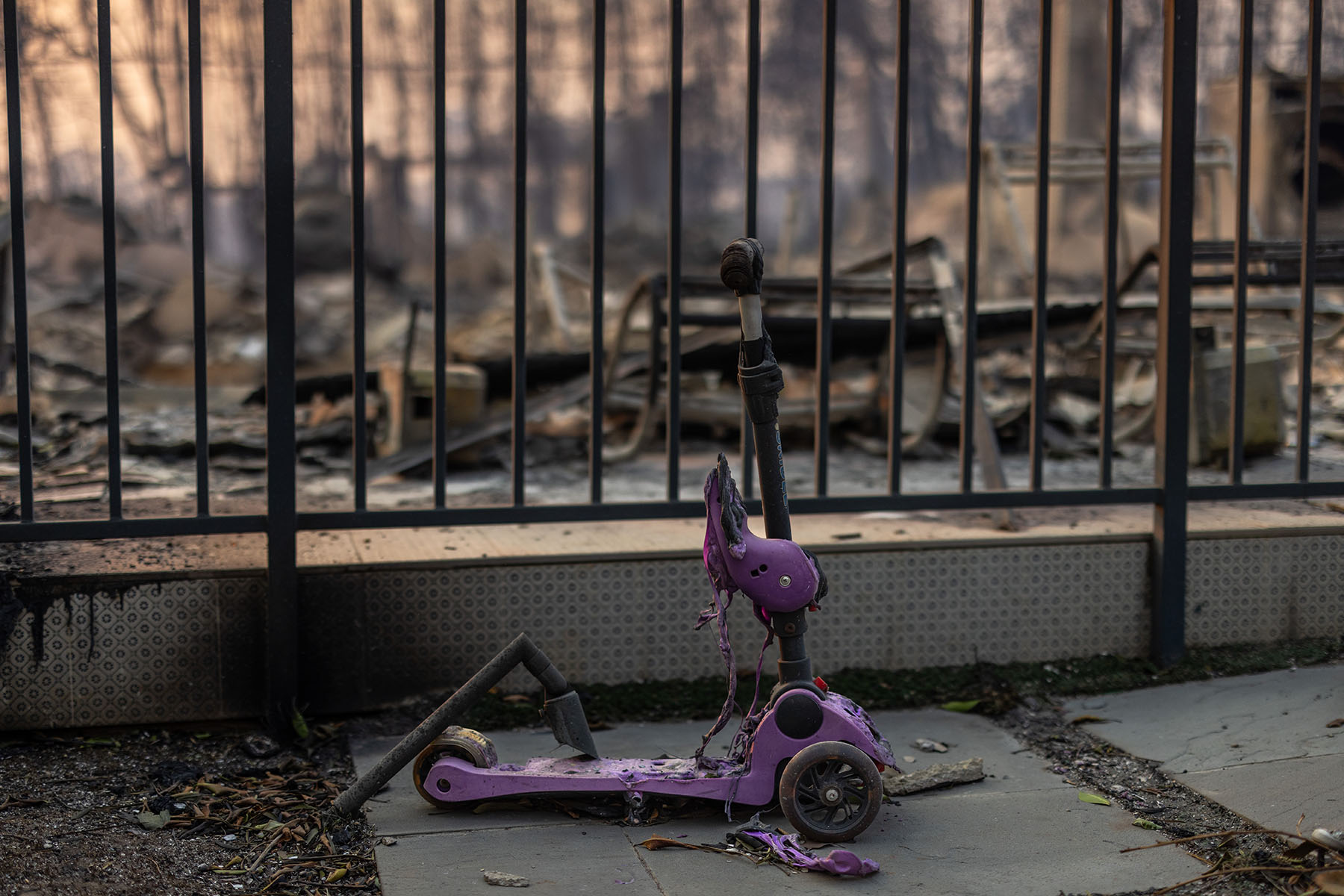
At the same time that she’s trying to comfort her son, Cardenas, a born and raised Angeleno, is also grieving the losses throughout her community. She knows at least a dozen families that have lost homes, and it’s been a topic of conversation with her son and her husband.
“We talked about how it’s OK to feel sad for our friends and our neighbors, and even people we don’t know who are losing their homes,” she said.
Amy Tan Cangilla could see the Palisades fire from her backyard and has had to find ways to talk about the disaster with her kids, who are 4 and 11. Her family’s house was in a red-flag zone, meaning it was at a high risk of fire. On a drive to school last week she tried to gently tell her son, who is 11, what was happening.
“I just told him your dad and I are kind of making a plan. We’re packing a go bag,” she said. “I think it was just too much for him. He just started crying, and I felt awful.” She has since tried to be more careful with what she tells him. “He’s such an empath. He really worries about the animals.”
Cangilla’s family did not end up evacuating, but they are still experiencing overwhelm and, at times, helplessness as the tragedy continues to grow. She and her husband have looked for ways to take their minds, and their kids’, off the fires. On Saturday, they were looking at the air quality and saw a pocket of beach where it looked decent and decided to drive down.
Watching her kids play in the sand allowed her family to be in the present moment — to take a mental break. Even if it was only for an hour and a half, Cangilla was grateful she could create this sense of “harmony and safety” for her kids.
It was grounding, she said, “to be able to handle it with so much love and care that you can be there for them even when you’re confused, or you’re feeling overwhelmed.”
Apart from the mental health concerns, moms are also worried about the impact of air pollution on their young children. Cardenas has made her son wear a mask to school and limits how much time he spends outside until the air feels safer.
-
Read Next:
“We’re in a situation where we don’t know the full long-term effects that this is going to have in our city, so I’ve been gravely concerned,” she said.
Wildfire smoke is particularly dangerous to public health because it can contain high concentrations of PM 2.5, particulate matter that is so small it can enter the lungs and the bloodstream and damage organs. Because the fires have burned thousands of structures, the air is also full of toxins from plastics, chemicals, asbestos and lead, which isn’t captured in the air quality monitoring reports. Children are especially vulnerable to the smoke because their lungs are still developing. Inhaling wildfire smoke can cause chest pain, wheezing and difficulty breathing, and it is even more dangerous for kids with asthma.
Shannon Rubenstone, who has a 6-year-old and a 1-year-old, evacuated with her kids before they had orders to leave her home in Pasadena. She could smell the chemicals in the smoke that had seeped through the windows in her house.
“I was like, we have to get out of here,” she said. “We have two small kids, and I don’t want to breathe this.”
They are currently staying in San Francisco, where — though she feels grateful to breathe clean air again — she feels torn about when to return. “I’m feeling this pull of wanting to go back and help our community and be a part of the rebuilding,” she said. But the reality is she has two small kids, including one who is too young to wear a mask.
The school Rubenstone sent her daughter to has also been impacted by the fires. One of its two campuses suffered extensive damage, while the other was impacted by debris and the toxic ash that has settled in the area. It’s unclear when her daughter will be back to school.
“I was heartbroken,” Rubenstone said. “We did so much to try to get into this school. It is a charter school, and we had really started to connect with the families.”
In the Pasadena Unified School District, around 87 teachers have also lost their homes and 600,000 students in the LA area have missed class due to poor air quality or evacuations in the past week.
The daycare her youngest was enrolled in has now permanently closed. Parents are now scrambling to find other child care options before spots fill up by other displaced families.
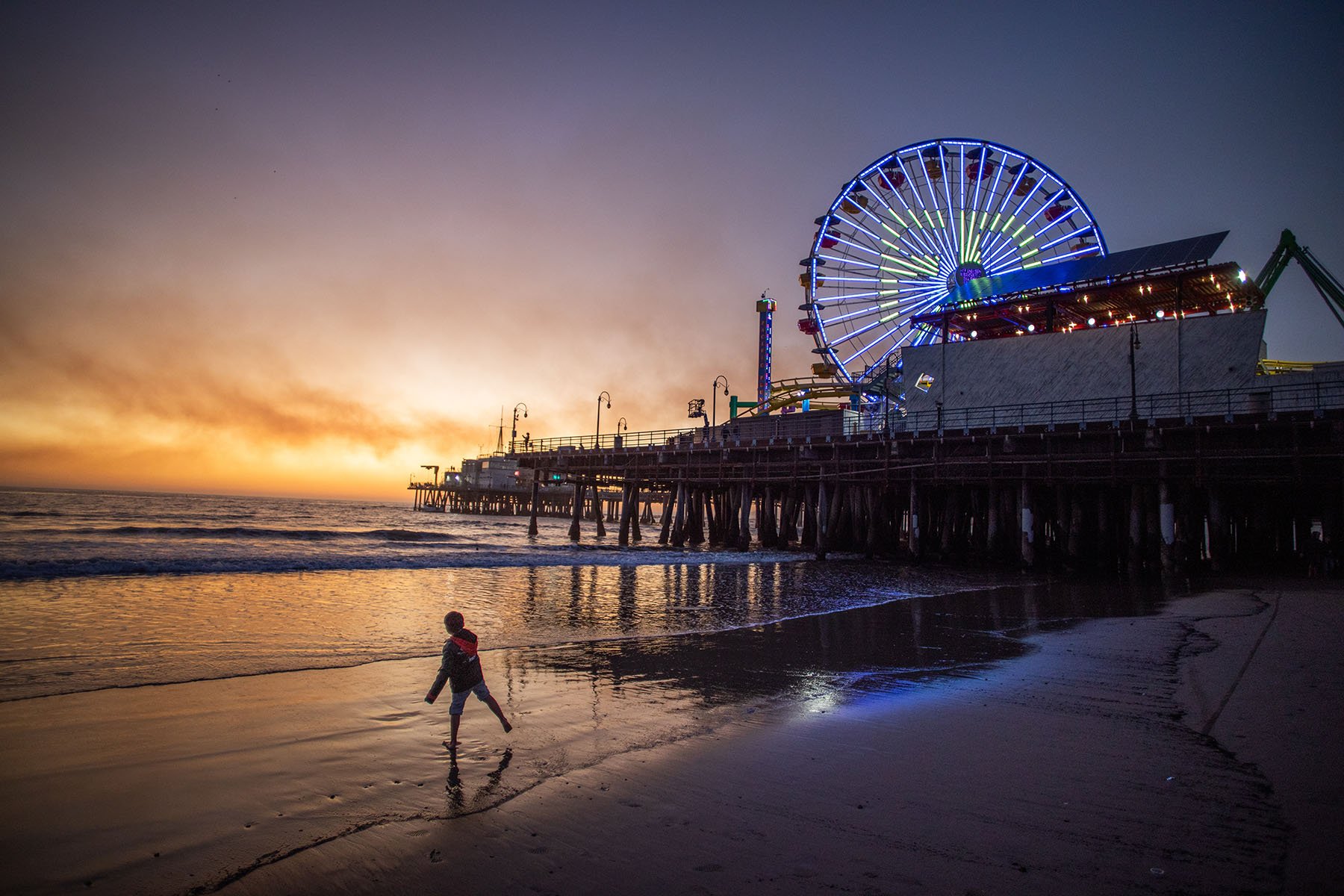
In the meantime, she and other moms are finding ways not just to care for their own families, but for their broader communities. Despite the distance, Rubenstone has stayed connected to moms from the school in a group chat, where they’ve banded together to help one mom who lost her home in the fire to help source clothing and other essentials.
“It’s been really beautiful. I mean in general just to look at the response throughout the whole community, but in our really smaller community, you know how everyone kind of jumped in that way,” Rubenstone said.
Tyler, who is also a community organizer, is already planning to return to her neighborhood with personal protective equipment so she can help elders sift through the ashes and look for keepsakes that might have survived the fires.
And Cardenas, who was worried about the climate crisis long before the wildfires, has a renewed sense of urgency to take action to hold elected officials accountable to what she feels is a “climate emergency.”
Cardenas hopes that her son will one day feel empowered to take action, too.
“One thing I tell him is let’s figure out how as you grow up, you can be part of the people who are a part of the side for the better,” Cardenas said. “I want him to feel very much like he has a say in what’s going to happen.”
